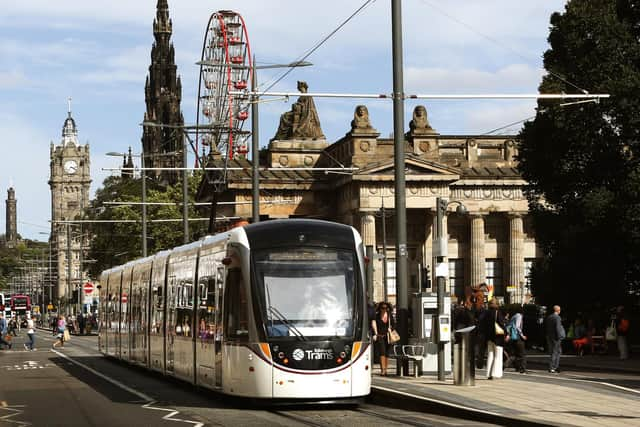Edinburgh Trams Inquiry: The saga that became its own scandal
It made the Nuremberg trials look like an exercise in brevity, boasts more volumes than The Lord of the Rings, and has provided some in Scotland’s legal profession with sufficient remittance as to make early retirement a tempting proposition. But after 3,393 days, over £13 million, and more hold-ups than a Sergio Leone movie, the Edinburgh tram inquiry has finally wheezed its way to the end of the line.
It was on June 5, 2014 that the-then first minister Alex Salmond announced a “swift and thorough inquiry” into the delivery of the Edinburgh trams project to establish the reasons for its delays and cost overruns. What has eventually emerged more than nine years later provides some of those answers, but crucially, it leaves more in the way of questions.
Advertisement
Hide AdAdvertisement
Hide AdChief among them being – what exactly was the point of it all? The inquiry chaired by Lord Hardie was designed to prevent a repeat of the mistakes that plagued the trams project. But just as that endeavour became a source of embarrassment and frustration, the probe itself went off the rails, becoming a scandal in and of itself with a purpose that has long been uncertain.
Consider if you will one of the key terms of reference for the inquiry, which state its findings should recommend how “major tram and light rail infrastructure projects of a similar nature might avoid such failures in future”. The only comparable infrastructure project in sight is the oft-mooted Clyde Metro mass transit scheme and, given the dire state of public finances, it is unlikely that will appear on the horizon any time soon.
Ironically, the only other similar project – a £207m expansion to the very trams scheme the inquiry was set up to interrogate – was approved by the City of Edinburgh four years ago, and the new 2.9-mile link began carrying its first paying passengers earlier this summer, having been delivered on time, on budget, and with comparatively little fuss.
The truth is the moment that expansion was greenlit, with councillors and officials having embarked on their own ‘lesson learning’ journey, Lord Hardie’s inquiry was rendered futile. Yet on it went, at considerable expense to taxpayers. Infamously, the undertaking has taken longer, and cost more, than Sir John Chilcott’s inquiry into the 2003 invasion of Iraq.
In the inquiry’s 959-page report, Lord Hardie spares a few paragraphs to acknowledge the length of time it took him and his team to complete the work. He said Mr Salmond’s phrase “created an expectation in the minds of some that the inquiry would be concluded within a short timescale”. But every inquiry, he pointed out, has its own “particular circumstances” that will impact on its timescale.


In the case of the trams inquiry debacle, those circumstances were extensive and invariably testing, and almost from the get go, it was hampered by delays. Some, such as illness and the advent of a global pandemic, were unavoidable. Others, however, provided ammunition aplenty to those critics who regarded the entire inquiry – which took eight times longer than the construction of the Empire State Building in New York – as a masterclass in well-remunerated incompetence.
A notorious example is the Waverley Gate offices used by the inquiry team. When Lord Hardie first visited the premises in June 2014, they appeared modern and fit for purpose. Although expensive, with the annual rent coming in at £250,000, the space was deemed large enough to handle the demands of the team, and accommodate visitors and members of the press.
But there was one not insignificant problem. It turned out the office’s connectivity to the secure IT network used by the